Some People You Need to Know
In the picture, Ann has a slight smile on her face as she stands on the grassy bank of a river in Zavala County. Then you hear her voice. “I know pain,” are her first words. The pain is from fibromyalgia, a progressive knotting of the muscle fibers. She is depressed because there is no cure, no hope that she will become better. She talks about losing her ability to care for herself. Through it all, she remains determined to take in every beautiful moment that is given. Her story ends with Louis Armstrong singing a few lines of “What a Wonderful World.”
Ann’s is one of 50 photographs included in Fine Line: Mental Health/Mental Illness, an ongoing exhibit by San Antonio photographer Michael Nye. Nye spent four years gathering photos and tape-recording subjects as they talked about their experiences with mental health issues. The photos alone would be rich enough. The accompanying tapes complete the stories.
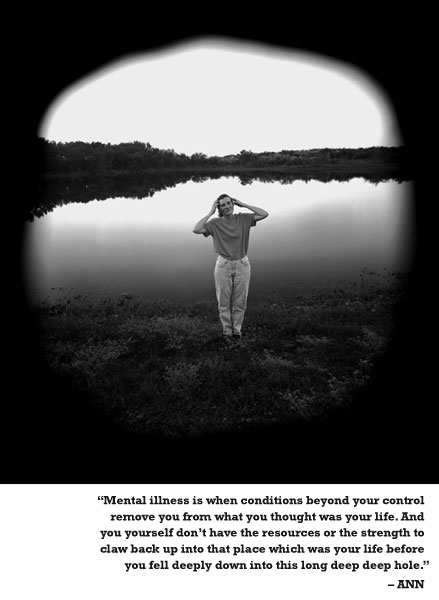
Ray and his son are shown among lush trees and bushes. Son Dillon is slightly blurred from motion because he does not understand that Nye’s 8-by-10 view camera requires long exposure times to achieve sharpness in depth. Dillon is autistic. His father has become a researcher in the fields of autism and premature aging. He explains the many environmental causes for mental illness. He explains the emotions he went through in coming to accept Dillon as he is.
When Nye, husband of Observer poetry editor Naomi Shihab Nye, announced his project at a National Alliance on Mental Illness meeting, people called asking to be included. He spent four days with each volunteer taking pictures and conducting interviews. For the exhibit, Nye picked one picture of each person and edited the matching recordings down to five minutes at most. The subjects were allowed to see and hear themselves before the exhibit was shown, and few changes were requested. Those who volunteered are uniformly eloquent and as diverse as our society. Many suffer from some mental illness themselves, but others are parents of, or the children of, those with mental illness.
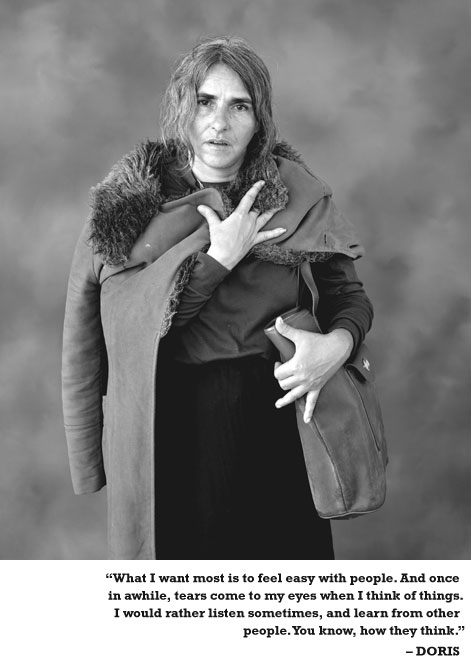
Most of the photographs are exquisitely detailed, 16-by-20 inch, neutral toned, black-and-white images on photographic paper. There is more detail than you could normally see with your unaided eyes, because the 8-by-10 negatives are enlarged to only twice their diagonal lengths. As you listen to the technically perfect recording, the flawless editing, your eyes can take in minute details of tone and texture. Seeing is touching from a distance, so the wealth of detail brings you into contact with each person as the clarity of voice fills your hearing through stereo headphones attached to each easel. Exceptions to the print format are two warmly toned, 11-by-14 prints of Richard. He looks out calmly from his close-up portraits. He has beautiful, slightly curly, thick brown hair. He explains the physiological basis for bipolar disorder. He asks, “Why are the mentally ill thrown into jails where they may be beaten and raped, as I have been?”
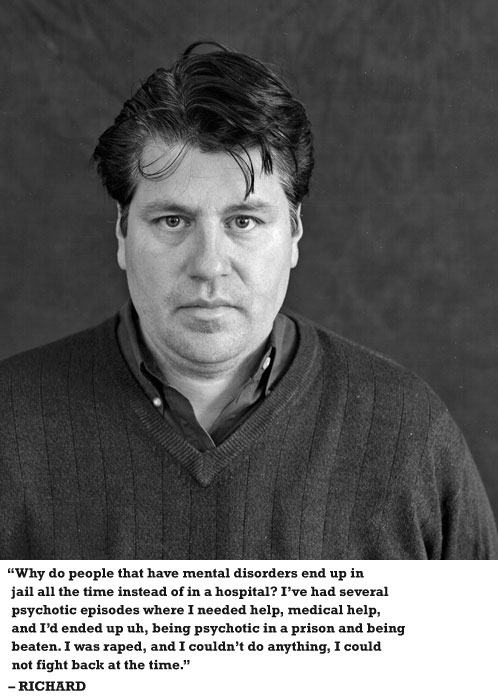
As you walk down the wide hallway, you can look at the pictures until one calls to you, then put on the headphones and listen to them speak. This is very different from film or video, where images are ordered and you have no control over the time you may spend with each frame, and the sound is given to you at once, passing by as quickly as the images. Here you may listen or not. You may stop the sound at any time and play the segment again. You may linger with any photograph, and with any detail of the photograph. The combination is an intimate experience. There is no rush. Time passes and stands still at the same time.
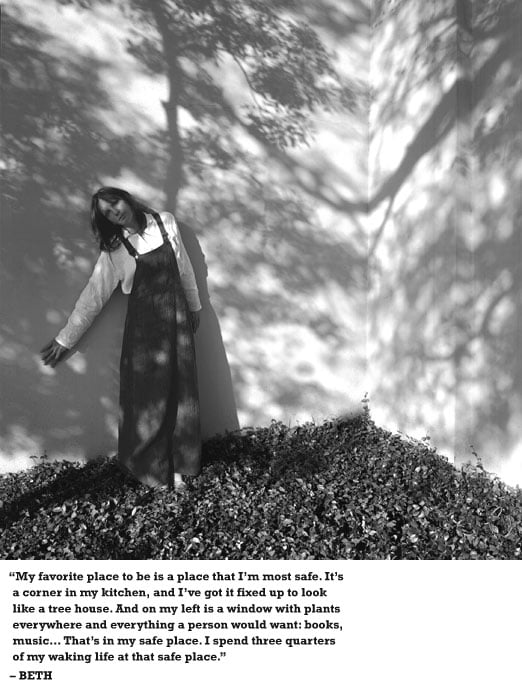
Many of the mentally ill say they most fear being ignored, dismissed, or forgotten because of the fear, the lack of understanding, many people have of them. One pictured person says we all need the “hush” experience. We need a quiet place where we are safe and do not have to do anything. Nye has created a “hush space” for you and those who would like you to know them better.
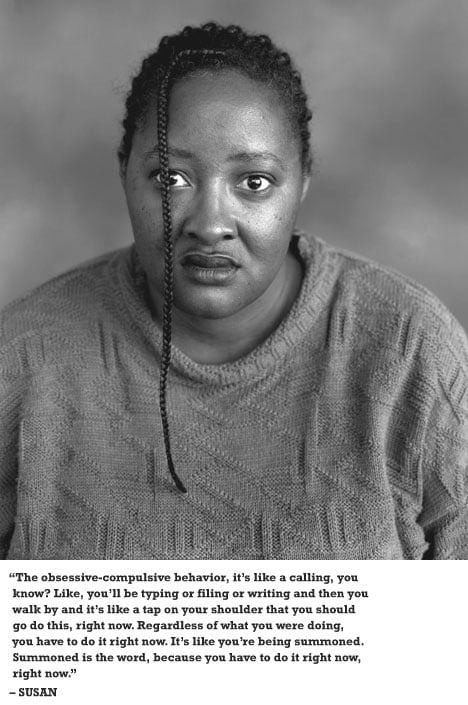
Fine Line: Mental Health/Mental Illness is being exhibited at the Austin State Hospital main building, 4110 Guadalupe. The hours are 8:30 a.m. to 5 p.m. Monday through Friday, with a 7 p.m. closing on Wednesday. Weekends by appointment; (512) 490-9810. There are plenty of signs to direct you once you are there. For a preview and further information, Nye’s web site is www.michaelnye.org.


